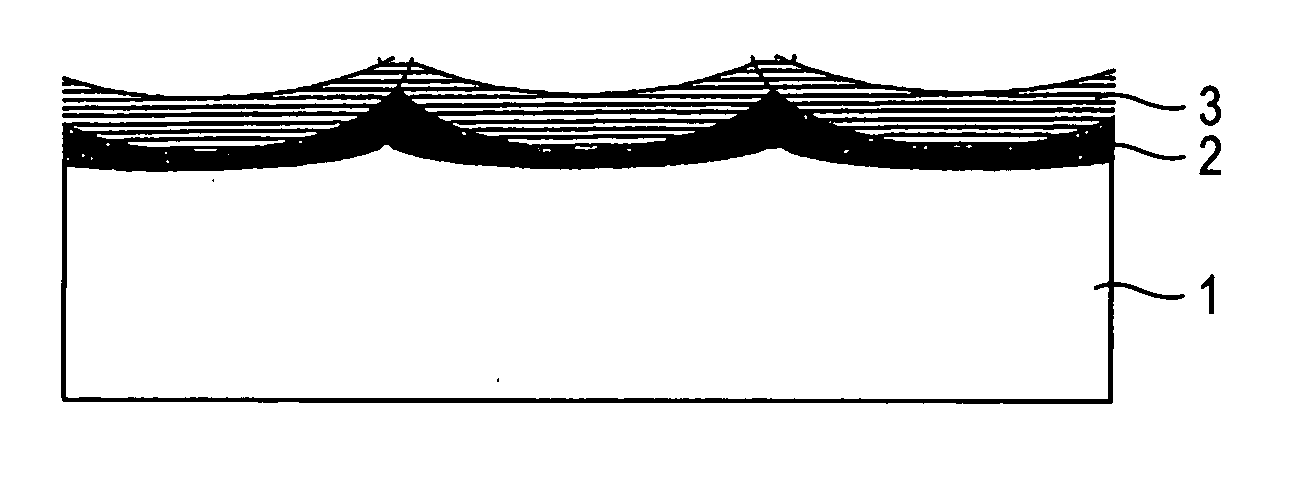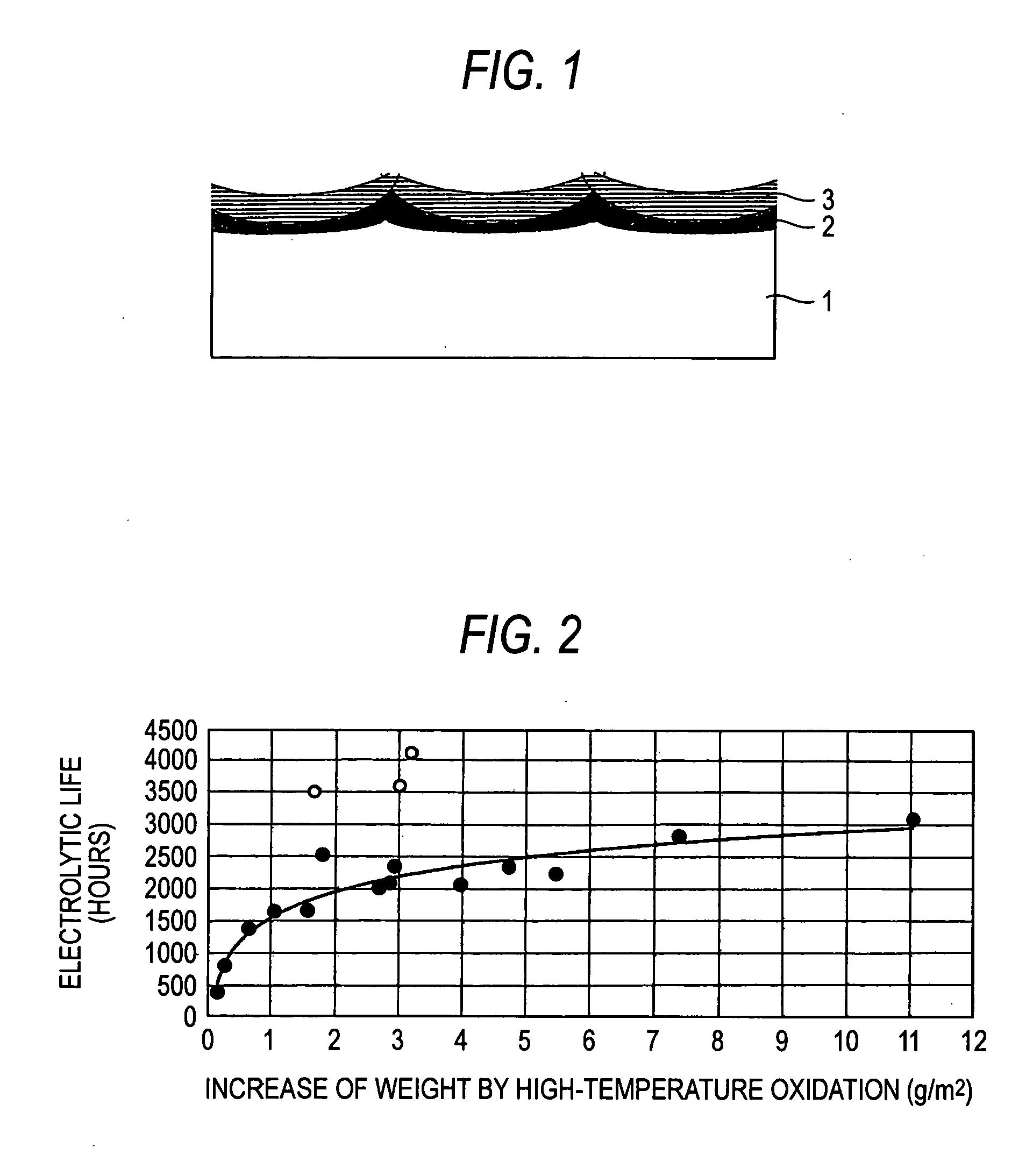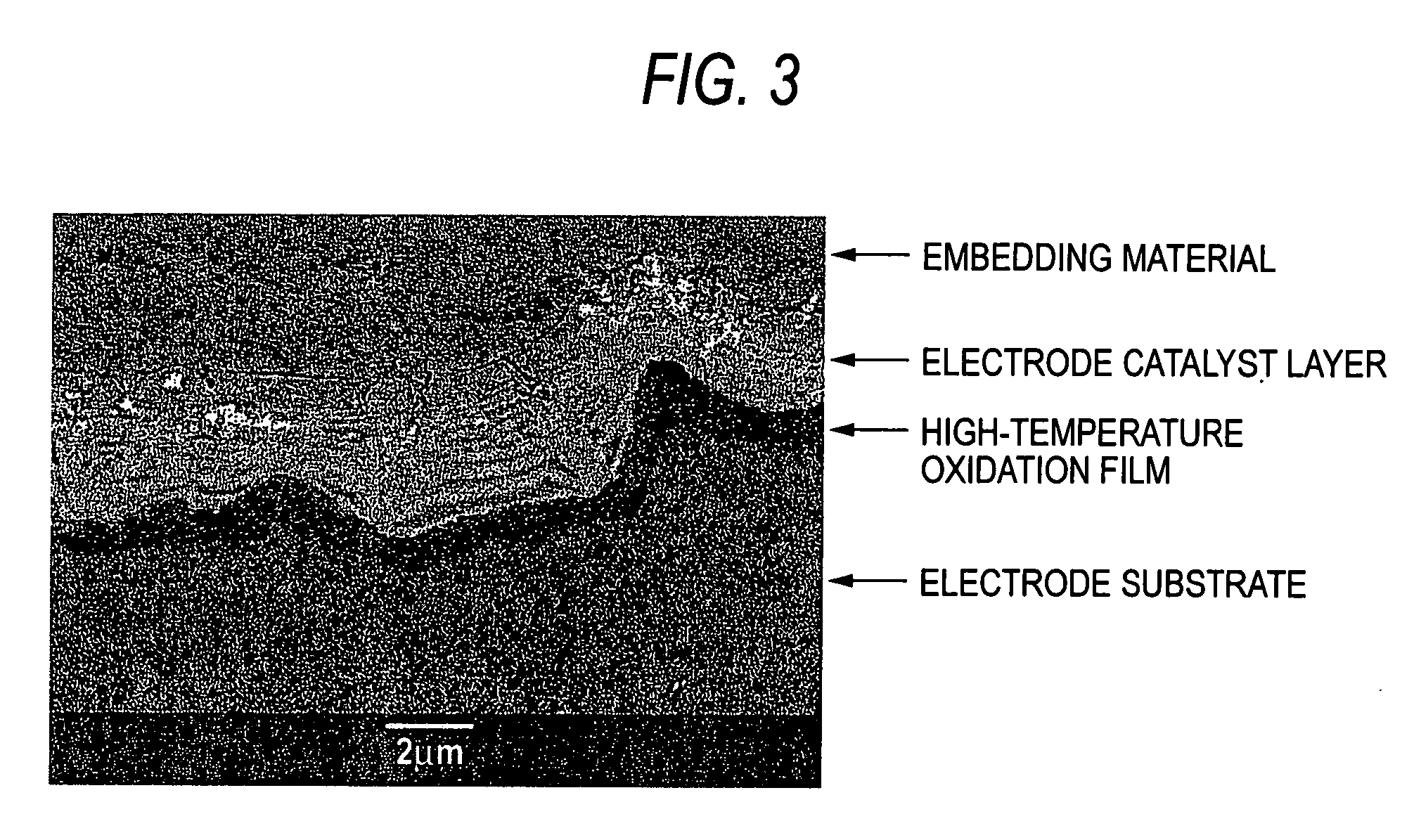Electrolytic electrode and process of producing the same
a technology of electrolytic electrodes and electrode catalysts, applied in the direction of electrolytic coatings, liquid/solution decomposition chemical coatings, manufacturing tools, etc., can solve the problems of increasing electrode potential, impurities likely to haveten the consumption of electrode catalysts, and extensive management of electrolytic baths
- Summary
- Abstract
- Description
- Claims
- Application Information
AI Technical Summary
Benefits of technology
Problems solved by technology
Method used
Image
Examples
example 1
[0079] The surface of each of 15 sheets in total of 3 mm-thick titanium plates for general industrial use was roughed by blasting with #20 alumina particles and then cleaned by dipping in boiling 20% hydrochloric acid to prepare 15 sheets in total of electrode substrates. The substrate was subjected to temperature rising in air at a rate of about 5.degree. C. / min from room temperature. The substrate was heat treated at each of the arrival temperatures for a prescribed holding time (see Table 2) and then subjected to furnace cooling to obtain a high-temperature oxidation film of titanium substrate. An increase of weight of the high-temperature oxidation film of each substrate (g / m.sup.2 and a value as reduced into mg / cm.sup.2) is shown in Table 2 (Examples 1-1 to 1-15).
[0080] A 10% hydrochloric acid mixed solution of iridium chloride containing 70 g / l of iridium and tantalum chloride containing 30 g / l of tantalum was coated on each titanium substrate having such a high-temperature ox...
example 2
[0097] The surface of each of 8 sheets in total of 3 mm-thick titanium plates for general industrial use was roughed by blasting with #20 alumina particles and then cleaned by dipping in boiling 20% hydrochloric acid to prepare electrode substrates (Examples 2-1 to 2-8).
[0098] First of all, prior to forming a high-temperature oxidation film of substrate, each of the six sheets of electrode substrates of Examples 2-1 to 2-6 was coated once with a 10% hydrochloric acid solution of tantalum chloride TaCl.sub.5 containing 10 g / l of tantalum as a coating solution for forming a high-temperature oxidation film described in Example 1 of JP-B-60-21232. After drying, the resulting substrate was subjected to temperature rising in air at a rate of about 5.degree. C. / min from room temperature, heat treated under a prescribed condition shown in Table 3, and then subjected to furnace cooling, to obtain a high-temperature oxidation film on the titanium substrate.
[0099] From the analysis of the X-ra...
example 3
[0113] The surface of each of 3 sheets in total of 3 mm-thick titanium plates for general industrial use was roughed by blasting with #20 alumina particles and then cleaned by dipping in boiling 20% hydrochloric acid to prepare 3 sheets in total of electrode substrates.
[0114] One of these substrates was injected with a Ta ion at injection energy of 45 keV in an injection amount of 1.times.10.sup.16 ions / cm.sup.2 (Example 3-1); and another substrate was injected with a Ta ion at injection energy of 45 keV in an injection amount of 1.times.10.sup.17 ions / cm.sup.2 (Example 3-2). Still another substrate was subjected by composite ion injection of Ta and Ni by injecting first with a Ta ion at injection energy of 45 keV in an injection amount of 1.times.10.sup.17 ions / cm.sup.2 and then with an Ni ion at injection energy of 50 keV in an injection amount of 5.times.10.sup.16 ions / cm.sup.2 (Example 3-3).
[0115] These samples were subjected to crystal structure analysis using a transmission el...
PUM
| Property | Measurement | Unit |
|---|---|---|
| temperature | aaaaa | aaaaa |
| thickness | aaaaa | aaaaa |
| temperature | aaaaa | aaaaa |
Abstract
Description
Claims
Application Information
 Login to View More
Login to View More - R&D
- Intellectual Property
- Life Sciences
- Materials
- Tech Scout
- Unparalleled Data Quality
- Higher Quality Content
- 60% Fewer Hallucinations
Browse by: Latest US Patents, China's latest patents, Technical Efficacy Thesaurus, Application Domain, Technology Topic, Popular Technical Reports.
© 2025 PatSnap. All rights reserved.Legal|Privacy policy|Modern Slavery Act Transparency Statement|Sitemap|About US| Contact US: help@patsnap.com



